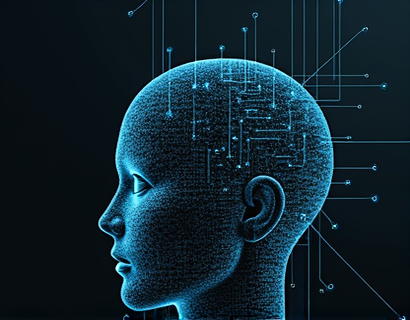AI-Driven Chat Interface: A Transformative Tool for ICU Knowledge and Healthcare Decision-Making
The integration of artificial intelligence in healthcare, particularly within Intensive Care Units (ICUs), marks a significant advancement in patient care and operational efficiency. An AI-driven chat interface emerges as a pivotal innovation, offering an instant gateway to comprehensive ICU knowledge and enhancing communication across various stakeholders. This technology is reshaping how patients, caregivers, and healthcare professionals access and utilize critical information, ultimately leading to informed decision-making and improved outcomes in critical care settings.
Enhancing Access to ICU Information
The complexity of ICU services and the rapid evolution of medical knowledge pose significant challenges for those involved in patient care. An AI-driven chat interface addresses these challenges by providing real-time, accurate, and up-to-date information. This tool serves as a reliable resource for anyone seeking insights into ICU operations, treatment protocols, and patient management strategies. By leveraging natural language processing and machine learning, the chat interface can understand and respond to a wide range of queries, making complex information accessible to users with varying levels of medical expertise.
Real-Time Insights for Better Decision-Making
One of the most significant benefits of an AI-driven chat interface is its ability to offer real-time insights. In the fast-paced environment of an ICU, timely information can be the difference between life and death. Healthcare professionals can use the chat interface to quickly access the latest research findings, treatment guidelines, and best practices. This immediate access to critical data enables clinicians to make informed decisions swiftly, improving patient outcomes and reducing the risk of errors. For instance, a physician can ask about the most recent guidelines for managing a specific condition, and the chat interface will provide the latest recommendations from reputable sources.
Improving Communication Between Patients and Caregivers
The chat interface also plays a crucial role in enhancing communication between patients and their caregivers. For patients and their families, understanding the intricacies of ICU care can be daunting. The AI-driven chat can simplify this by providing clear, concise explanations of medical procedures, treatment options, and potential outcomes. This tool empowers patients and their loved ones to actively participate in the decision-making process, fostering a more collaborative and supportive healthcare environment. By breaking down information barriers, the chat interface ensures that all parties are well-informed and aligned in their care goals.
Empowering Healthcare Professionals
Healthcare professionals, including nurses, doctors, and other ICU staff, benefit greatly from an AI-driven chat interface. The chat can serve as a quick reference tool, providing instant answers to common questions and complex queries alike. This not only saves time but also reduces the cognitive load on healthcare workers, allowing them to focus more on patient care. For example, a nurse can ask about the proper administration of a specific medication, and the chat will provide detailed instructions and potential side effects. This level of support is invaluable in high-stress environments where accuracy and efficiency are paramount.
Supporting Healthcare Administrators
Healthcare administrators also stand to gain from the implementation of an AI-driven chat interface. The chat can assist in managing various administrative tasks, such as scheduling, resource allocation, and compliance monitoring. By automating routine inquiries and providing data-driven insights, the chat interface helps administrators make more informed decisions regarding hospital operations and resource management. For instance, an administrator can query the chat about patient turnover rates or staffing needs, and receive actionable recommendations based on real-time data.
Ensuring Patient Safety and Quality of Care
Patient safety is a top priority in ICU settings, and an AI-driven chat interface contributes significantly to this goal. By providing accurate and timely information, the chat helps prevent medical errors and ensures that patients receive the highest standard of care. The chat can alert healthcare providers to potential issues, such as drug interactions or allergic reactions, and suggest corrective actions. Additionally, the chat can monitor patient data in real-time, identifying trends or anomalies that may require immediate attention. This proactive approach to patient monitoring enhances overall quality of care and reduces the risk of complications.
Facilitating Continuous Learning and Professional Development
The medical field is constantly evolving, and staying updated with the latest knowledge is essential for healthcare professionals. An AI-driven chat interface can serve as a continuous learning tool, offering access to the latest research, clinical trials, and educational resources. Healthcare providers can engage in interactive discussions, ask questions, and receive detailed explanations on various topics. This not only aids in professional development but also fosters a culture of lifelong learning within the healthcare team. For example, a doctor can ask about new advancements in critical care techniques and receive summaries of recent studies and expert opinions.
Enhancing Patient Engagement and Satisfaction
Patient engagement is a critical factor in healthcare outcomes, and an AI-driven chat interface can significantly enhance patient involvement. By providing patients and their families with easy access to relevant information, the chat interface promotes transparency and trust. Patients can ask questions, express concerns, and receive reassurance, leading to higher satisfaction levels. The chat can also facilitate better communication between the healthcare team and patients, ensuring that everyone is on the same page regarding treatment plans and expectations. This level of engagement can improve patient compliance and overall satisfaction with the care received.
Overcoming Language and Cultural Barriers
In diverse healthcare settings, language and cultural barriers can impede effective communication. An AI-driven chat interface can overcome these challenges by offering multilingual support and culturally sensitive responses. The chat can understand and respond in multiple languages, making it accessible to a broader range of patients and caregivers. Additionally, the chat can be programmed to consider cultural nuances and provide tailored information that resonates with different patient groups. This inclusivity ensures that all patients receive the support they need, regardless of their background.
Integration with Electronic Health Records
The effectiveness of an AI-driven chat interface is greatly enhanced when integrated with Electronic Health Records (EHRs). This integration allows the chat to access a patient's medical history, current medications, and other relevant data, providing more accurate and personalized responses. Healthcare providers can also use the chat to update EHRs in real-time, ensuring that all team members have the most current information at their fingertips. This seamless integration streamlines workflows and improves the overall efficiency of patient care.
Challenges and Considerations
While the benefits of an AI-driven chat interface are numerous, there are also challenges and considerations to address. Ensuring the accuracy and reliability of the information provided is paramount. The chat must be trained on high-quality, up-to-date data sources and regularly updated to reflect the latest medical knowledge. Additionally, privacy and security concerns must be prioritized, as sensitive patient information is handled. Compliance with regulations such as HIPAA is essential to protect patient data and maintain trust.
Future Prospects and Innovations
The future of AI-driven chat interfaces in healthcare is promising, with ongoing advancements in AI technology poised to enhance their capabilities further. Machine learning algorithms can become more sophisticated, enabling the chat to learn from interactions and improve over time. The integration of augmented reality and virtual reality could also provide immersive educational experiences for healthcare professionals. As these technologies evolve, the potential for AI-driven chat interfaces to transform healthcare continues to grow, offering even more innovative solutions for improving patient care and operational efficiency.










































